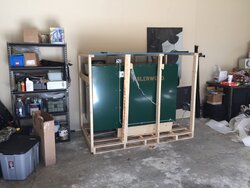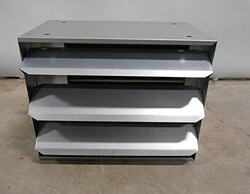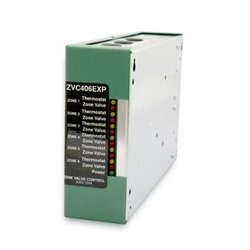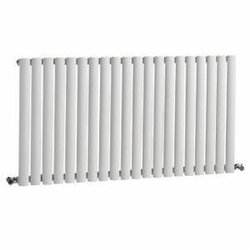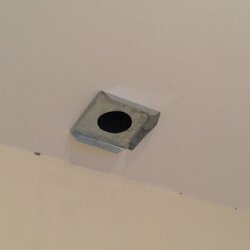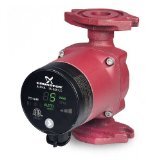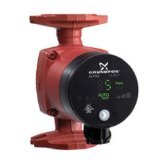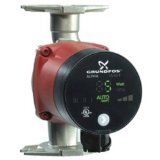Hello, I am new to the boiler adventure and my new glenwood 7050 arrives today. I have been reading and researching for weeks and I believe I have my head wrapped around the install for the most part. There are a couple of questions I would love some feedback on. and if some of you are willing, some ongoing feedback as I work my way through this setup. I want to attack this install myself as much as I can, so that I am very familiar with my own how to and such. I appreciate in advance any and all feedback. I will begin posting pics as I dig in..
My set up...
Glenwood 7050 in garage, vented through roof via pre-existing chimney.
half inch 6 way manifold to service 5 zones ( 1 inch inlet to manifold, .5 inch legs)
5x taco 007 pumps ran inline post manifold to each zone
zone 1 - water to air exchange for forced air unit
zone 2 - Domestic hot water
zone 3 - panel style radiator in basement to creat a basement zone seperate from the forced air
zone 4 and 5 - panel style radiator in kids rooms on 3rd floor to supplement
note: currently no pump pre manifold although I have a taco 1 / 6th horse pump, but I am hoping to reserve this for the guest house run in the spring.
In case it matters,
The Glenwood 7050 will heat 6000 sq ft but for now we are working with just the main house at +/- 4000 sq ft
( the guest house and shop will be projects for next year)
The loops for zone 1,2, and 3 will be apprx 20-30' total loop distance
zone 4 and 5 will be 30 - 40' total loop ( zone 1-3 is in basement nearly directly below the boiler placement, and zone 4 and 5 are upstairs above the garage/ boiler placement) 3 stories including basement, boiler and garage on middle/main level
Plannning on a whole home generator once this install is complete as well as solar back up next year, so...... a "power out " heat dump/ circ/ heat my home whenever plan is covered I believe.
My questions.
Pumps:
Because my loops are minimal length, my thought was to only have pumps on the legs of the manifold pulling heat for each zone as needed. in other words, no pump on main supply line. Is this a reasonable thought?
Heat dump: Based on the above thought, What would be the best way to create a heat dump without adding another pump on main supply line if that is even possible
Heat dump: Can someone explain the plumbing flow on the heat dump? is it a pass through or bypass with a diverter or.......
Storage: why storage?
Zone 4 and 5: Kids bedrooms share a wall and are basically directly above the garage/ boiler placement. Should I run one line to the closet inbetween and then have a 2 way manifold with thermostats to open/close valves on the legs ( one pumps pushing both) or run each seperately from the main manifold and each have their own pump and thermostat etc...
Im sure I will have more questions and many trips to lowe's/ home depot but im looking forward to this process. Also, I intend to do nearly all of this install with pex as opposed to copper initially. this way I can make adjustments or fix my trial and error items without too much headache. After everything is done and Im ready to set my install in stone ( or copper ) I will take on the task of replacing the pex with copper a few legs at a time.
My set up...
Glenwood 7050 in garage, vented through roof via pre-existing chimney.
half inch 6 way manifold to service 5 zones ( 1 inch inlet to manifold, .5 inch legs)
5x taco 007 pumps ran inline post manifold to each zone
zone 1 - water to air exchange for forced air unit
zone 2 - Domestic hot water
zone 3 - panel style radiator in basement to creat a basement zone seperate from the forced air
zone 4 and 5 - panel style radiator in kids rooms on 3rd floor to supplement
note: currently no pump pre manifold although I have a taco 1 / 6th horse pump, but I am hoping to reserve this for the guest house run in the spring.
In case it matters,
The Glenwood 7050 will heat 6000 sq ft but for now we are working with just the main house at +/- 4000 sq ft
( the guest house and shop will be projects for next year)
The loops for zone 1,2, and 3 will be apprx 20-30' total loop distance
zone 4 and 5 will be 30 - 40' total loop ( zone 1-3 is in basement nearly directly below the boiler placement, and zone 4 and 5 are upstairs above the garage/ boiler placement) 3 stories including basement, boiler and garage on middle/main level
Plannning on a whole home generator once this install is complete as well as solar back up next year, so...... a "power out " heat dump/ circ/ heat my home whenever plan is covered I believe.
My questions.
Pumps:
Because my loops are minimal length, my thought was to only have pumps on the legs of the manifold pulling heat for each zone as needed. in other words, no pump on main supply line. Is this a reasonable thought?
Heat dump: Based on the above thought, What would be the best way to create a heat dump without adding another pump on main supply line if that is even possible
Heat dump: Can someone explain the plumbing flow on the heat dump? is it a pass through or bypass with a diverter or.......
Storage: why storage?
Zone 4 and 5: Kids bedrooms share a wall and are basically directly above the garage/ boiler placement. Should I run one line to the closet inbetween and then have a 2 way manifold with thermostats to open/close valves on the legs ( one pumps pushing both) or run each seperately from the main manifold and each have their own pump and thermostat etc...
Im sure I will have more questions and many trips to lowe's/ home depot but im looking forward to this process. Also, I intend to do nearly all of this install with pex as opposed to copper initially. this way I can make adjustments or fix my trial and error items without too much headache. After everything is done and Im ready to set my install in stone ( or copper ) I will take on the task of replacing the pex with copper a few legs at a time.



